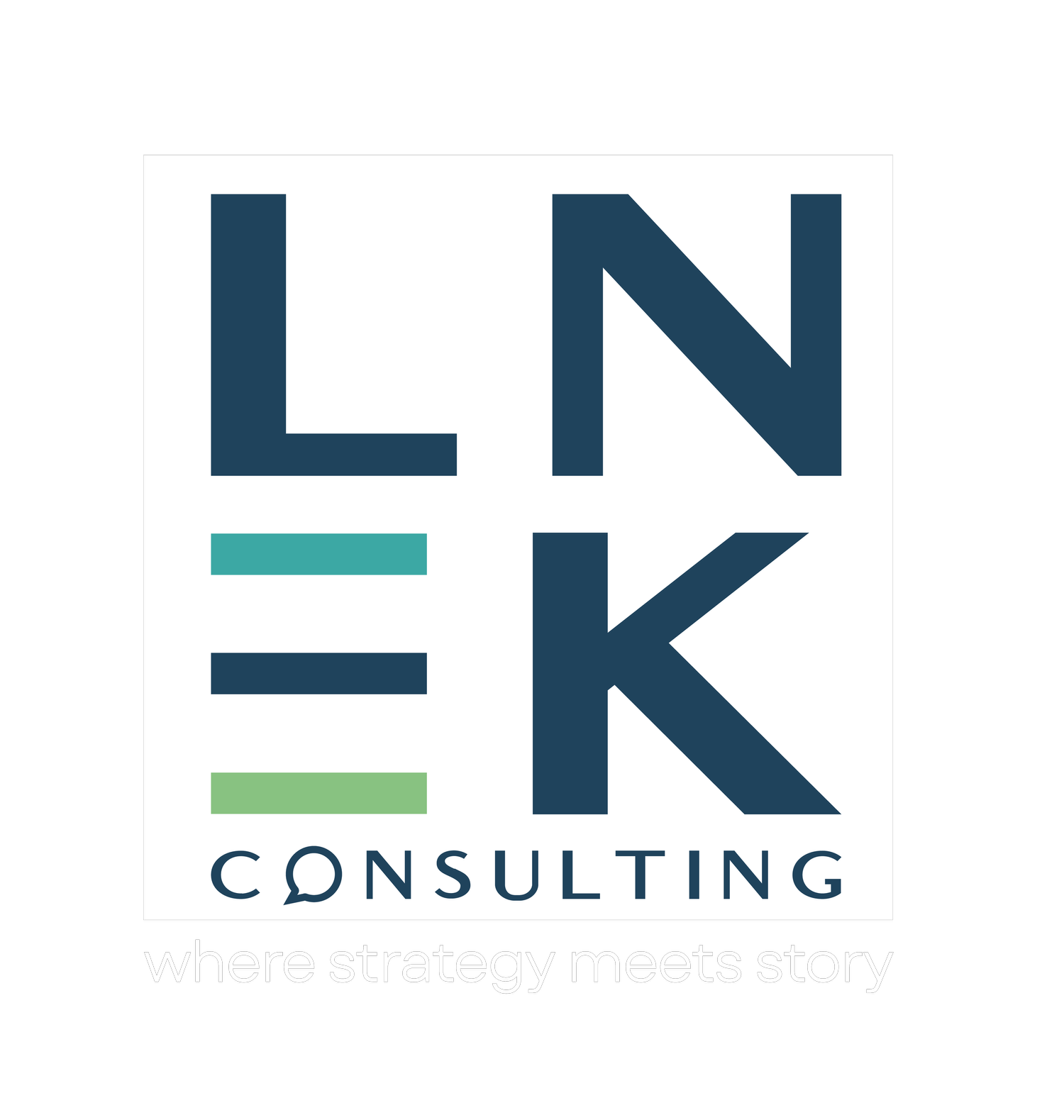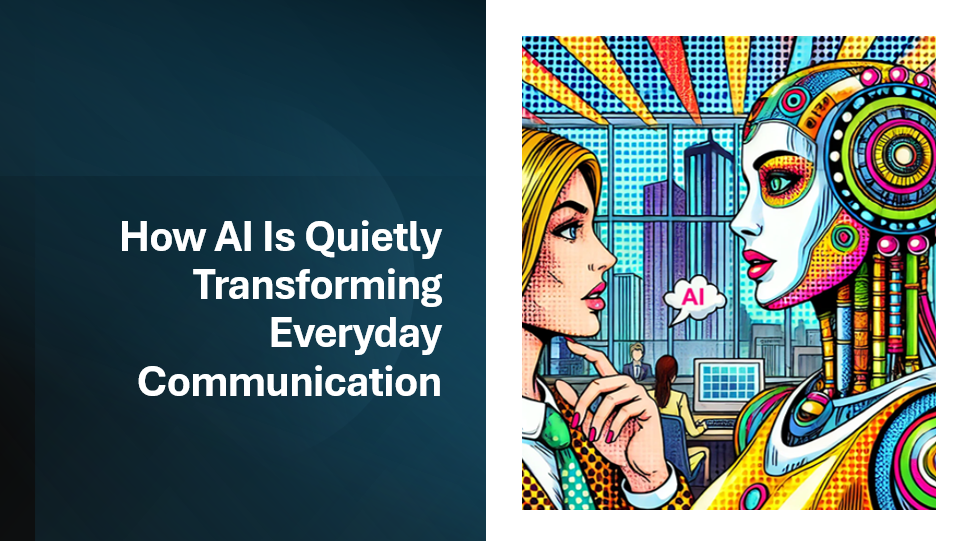How AI Is Quietly Transforming Everyday Communication
Artificial Intelligence (AI), once confined to science fiction, is quietly reshaping how we connect, both at work and in our daily lives. It’s not here to replace us but help us communicate better. AI has become a strategic necessity or partner, depending on your needs, not an option.
In a world where a single missed message can stall a project or fracture a relationship, communication has never mattered more or moved faster. Think back just a few decades: letters took weeks to arrive. Then came faxes, emails, and instant messaging. Today, we video-call colleagues across continents, translate languages in real time, and expect replies within minutes. And still, many of us feel overwhelmed, misunderstood, or just plain exhausted by the sheer volume of messages coming our way.
Meet Clara, a project manager at a global engineering firm. Her team spans four countries and three time zones. Before, language barriers, delayed responses, and scheduling chaos made collaboration feel like herding cows. Now, Clara utilizes an AI-powered platform that translates conversations in real-time, preserving her colleagues’ voices so that nothing gets lost in translation. Her calendar syncs automatically across time zones, suggesting optimal meeting slots. Emails get sorted by priority, and internal updates are personalized, so no one misses what matters. What used to take her hours now takes minutes. Her team is finishing projects 60% faster with fewer misunderstandings and more trust. This isn’t a glimpse into the future. This is now!
Artificial Intelligence (AI), once confined to science fiction, is quietly reshaping how we connect, not just at work, but in our daily lives. And it’s not here to replace us. It’s here to help us communicate better. AI has become a strategic necessity, not an option. According to a June 2025 report (The 2025 CEO Agenda), a majority of CEOs cite measurable business benefits from their generative AI initiatives, including operational efficiency, customer satisfaction, and resilience.
What we’re witnessing now is a leap, not a step. A December 2022 Acumen Research & Consulting forecast projected the generative AI market growing from roughly USD 7.9 billion in 2021 to around USD 110.8 billion by 2030, broader AI market forecasts estimate total AI growing to between USD 1.8 trillion and USD 1.81 trillion by 2030 (~USD 391 billion in 2025.
You need AI, because information overload is real; on average, professionals process more than 100,000 words every day. AI tools help filter, prioritize, and summarize, so critical messages don’t drown in digital noise. The world speaks many languages. Companies like Siemens now use AI interpreters to facilitate multilingual collaboration without losing the human connection of voice and tone. Customers expect answers fast. At Shopify, smart chatbots resolve 80% of inquiries in seconds, with emotional intelligence baked in to detect frustration or satisfaction.
It’s not just about speed only, its about improving communication, being more inclusive, more meaningful, and more effective. In this rapidly evolving landscape, AI emerges not merely as a helpful tool but as an imperative force, fundamentally redefining, enhancing, and streamlining how we connect. With Gartner predicting that 30% of outbound marketing messages will use generative AI by 2025, we're witnessing a paradigm shift that extends far beyond simple automation.
Let’s explore five ways AI is reinventing communication and why this shift is important.
Enhanced Intelligence and Reasoning Capabilities: AI systems now process context, emotion, and intent with extraordinary depth. Microsoft’s AI-powered Interpreter, integrated into Teams, allows participants who speak different languages to converse fluently while preserving their unique vocal tones. This isn’t just translation, it’s empathy through technology, maintaining human warmth while eliminating linguistic barriers.
Agentic AI in Communication: We are witnessing the rise of “agentic AI” intelligent assistants that don’t just wait for commands but anticipate needs. These AI agents can manage workflows, schedule follow-ups, and even mediate team conflicts by analyzing communication patterns and recommending better responses. They transform static email chains into dynamic, forward-moving exchanges.
Multi-channel Communication Integration: Communication today is rarely limited to one format. AI platforms like DeepL Voice for Meetings demonstrate the power of multimodal integration handling speech, text, video, and visuals at once. In meetings, AI not only translates conversations but preserves their natural flow, letting people communicate seamlessly across languages and mediums. AI also brings measurable insight into how communication is working. Platforms like Yammer apply sentiment analysis to track employee morale. Sales teams monitor email engagement metrics to improve conversion strategies. Customer service departments continuously learn from interactions to refine scripts and support tools
Personalized Internal Communications is being redefined. Platforms such as LumApps use AI to analyze employee preferences and deliver internal messages tailored to individuals not just departments. This means employees no longer miss important updates or feel overwhelmed by irrelevant emails. Engagement rises, and internal communication becomes more human. Information overload with professionals ended with platforms like Slack’s Workflow Builder using AI to filter messages, prioritize urgent items, and summarize key points from chaotic channels. This allows employees to focus on what matters, without losing sight of the bigger picture.
Strategic use of AI is producing concrete results in real-world organizations. In legal firms using Google Workspace, AI sorts and flags urgent communications like regulatory alerts or client disputes, ensuring the right eyes see them first. At H&M, internal AI bots field employee questions about HR and IT, resolving routine queries instantly while freeing up staff for more complex, human-centred tasks. Even scheduling has evolved. Consulting giants like Accenture now use AI to coordinate global calendars, analyze availability across time zones, and suggest optimal meeting times. This reduces last-minute changes and improves team alignment.
Marketing teams at HubSpot use AI to craft deeply personalized outreach based on client history and preferences. Consultants polish their proposals using Grammarly Business, which refines tone and grammar for clarity and professionalism. NGOs delivering webinars across continents now use DeepL and Google Translate to create real-time access in multiple languages, broadening inclusion and reducing language inequality. Meanwhile, at tech startups and research labs, tools like Notion AI and Otter.ai help synthesize massive data sets, transcribe live meetings, and even recommend relevant research articles during brainstorming sessions. The result is a more connected, informed, and creative workforce.
Looking ahead to a more connected future, we’re approaching a world where AI won’t just help you type faster; it will help you understand better. It will detect tone, suggest more constructive phrasing, translate intent, not just words and serve as a partner in navigating complex human dynamics. So, whether you're a teacher, an engineer, a startup founder, or a CEO, know this: AI is already helping shape the way you connect. The revolution is here. And it’s just getting started.
The question for today’s organizations is no longer whether AI should be part of communication, but how best to use it.
At LNEK Consulting, we believe communication should be intelligent, inclusive, and deeply human. AI offers the tools, but the strategy and action must come from us.
Look out for our next article on AI and Ethics
#HumanCenteredAI #Communication #Accessibility #CustomerExperience #InternalComms #DigitalTransformation


